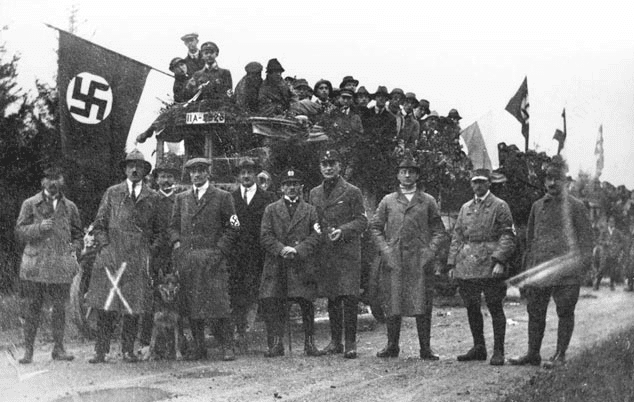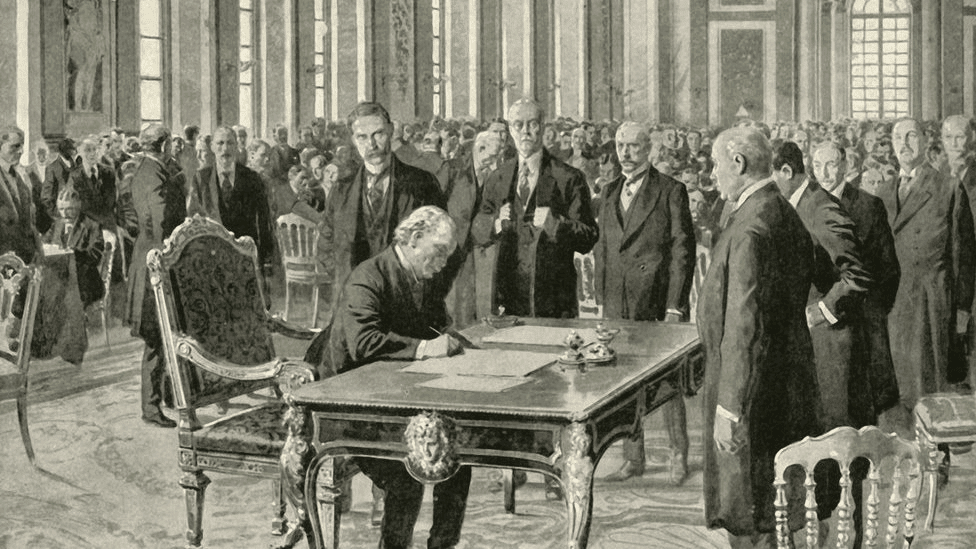Class 9 Exam > Class 9 Notes > Social Studies (SST) Class 9 > Mnemonics: Nazism and the Rise of Hitler
Mnemonics: Nazism and the Rise of Hitler | Social Studies (SST) Class 9 PDF Download
1. Causes of the Rise of Nazism
Mnemonic: WET HEDGE
- W - Weimar Republic's failure (unstable, weak government)
- E - Economic depression (Great Depression, hyperinflation)
- T - Treaty of Versailles (humiliation, reparations)
- H - Hitler’s charisma and propaganda
- E - Exploitation of nationalist emotions
- D - Disunity among opposition (Communists vs. Socialists)
- G - German pride shattered
- E - Emergency powers (Article 48 misused)

2. Key Features of Nazi Ideology
Mnemonic: R.A.C.E.S.
- R - Racial hierarchy (Aryans superior)
- A - Anti-Semitism (hatred of Jews)
- C - Cult of violence and masculinity
- E - Expansionism (Lebensraum or living space)
- S - State control (media, economy, military)
3. Hitler’s Rise to Power – Timeline
Mnemonic: FIGHT
- F - Formation of Nazi Party (1919)
- I - Imprisonment after failed coup (1923)
- G - Great Depression boosts support (1929)
- H - Hitler becomes Chancellor (1933)
- T - Total dictatorship after Enabling Act (1933)
4. Impact of the Treaty of Versailles on Germany
Mnemonic: BLAST
- B - Blame (War Guilt Clause)
- L - Loss of territory (13% land, colonies)
- A - Army limited
- S - Severe reparations (£6 billion)
- T - Territorial demilitarization (Rhineland)

5. Nazi Control Over Youth
Mnemonic: JUMP
- J - Jungvolk and Hitler Youth (compulsory groups)
- U - Unfit excluded (disabled, Jews removed from schools)
- M - Militant training (aggression, obedience, boxing)
- P - Propaganda-based textbooks
6. Groups Targeted by Nazis
Mnemonic: JAG DIP
- J - Jews
- A - Aryan ‘undesirables’ (disabled, mentally ill)
- G - Gypsies
- D - Democrats/Political opponents
- I - Intellectuals and Communists
- P - Poles and Slavs
The document Mnemonics: Nazism and the Rise of Hitler | Social Studies (SST) Class 9 is a part of the Class 9 Course Social Studies (SST) Class 9.
All you need of Class 9 at this link: Class 9
|
55 videos|525 docs|78 tests
|
FAQs on Mnemonics: Nazism and the Rise of Hitler - Social Studies (SST) Class 9
| 1. What were the main factors that contributed to the rise of Nazism in Germany? |  |
Ans. The rise of Nazism in Germany can be attributed to several factors, including the economic turmoil following World War I, the Treaty of Versailles's harsh penalties, widespread unemployment, and social unrest. The Nazi Party, led by Adolf Hitler, capitalized on public discontent by promoting nationalist and anti-Semitic sentiments, offering simple solutions to complex problems, and promising to restore Germany's former glory.
| 2. How did Hitler gain power in Germany? |  |
Ans. Hitler gained power through a combination of political maneuvering and popular support. He was appointed Chancellor in 1933 after the Nazis became the largest party in the Reichstag. Following the Reichstag Fire, he used the resulting panic to push through the Reichstag Fire Decree and the Enabling Act, which allowed him to enact laws without parliamentary consent, effectively consolidating his power and establishing a totalitarian regime.
| 3. What role did propaganda play in the Nazi regime? |  |
Ans. Propaganda was a crucial tool for the Nazi regime in shaping public opinion and maintaining control. The Nazis utilized mass media, including film, radio, and print, to spread their ideology, glorify Hitler, and promote anti-Semitic views. Joseph Goebbels, the Minister of Propaganda, orchestrated campaigns that created a cult of personality around Hitler and aimed to unify the German populace under Nazi ideals.
| 4. What were the consequences of Nazi policies on German society? |  |
Ans. Nazi policies had profound consequences on German society, leading to the persecution of minorities, particularly Jews, and the establishment of a totalitarian state. The regime promoted Aryan supremacy, resulting in widespread discrimination, violence, and ultimately the Holocaust. Additionally, the Nazis implemented strict social controls, limiting freedoms and enforcing conformity to their ideological beliefs.
| 5. How did the international community respond to the rise of Nazism? |  |
Ans. The international community had a mixed response to the rise of Nazism. Initially, many countries underestimated Hitler's ambitions and pursued policies of appeasement, hoping to maintain peace. However, as Nazi aggression escalated, particularly with the invasion of Poland in 1939, countries like Britain and France eventually declared war on Germany, leading to World War II. The response highlighted a failure to recognize the threat posed by Hitler and the Nazi regime earlier on.
Related Searches





















